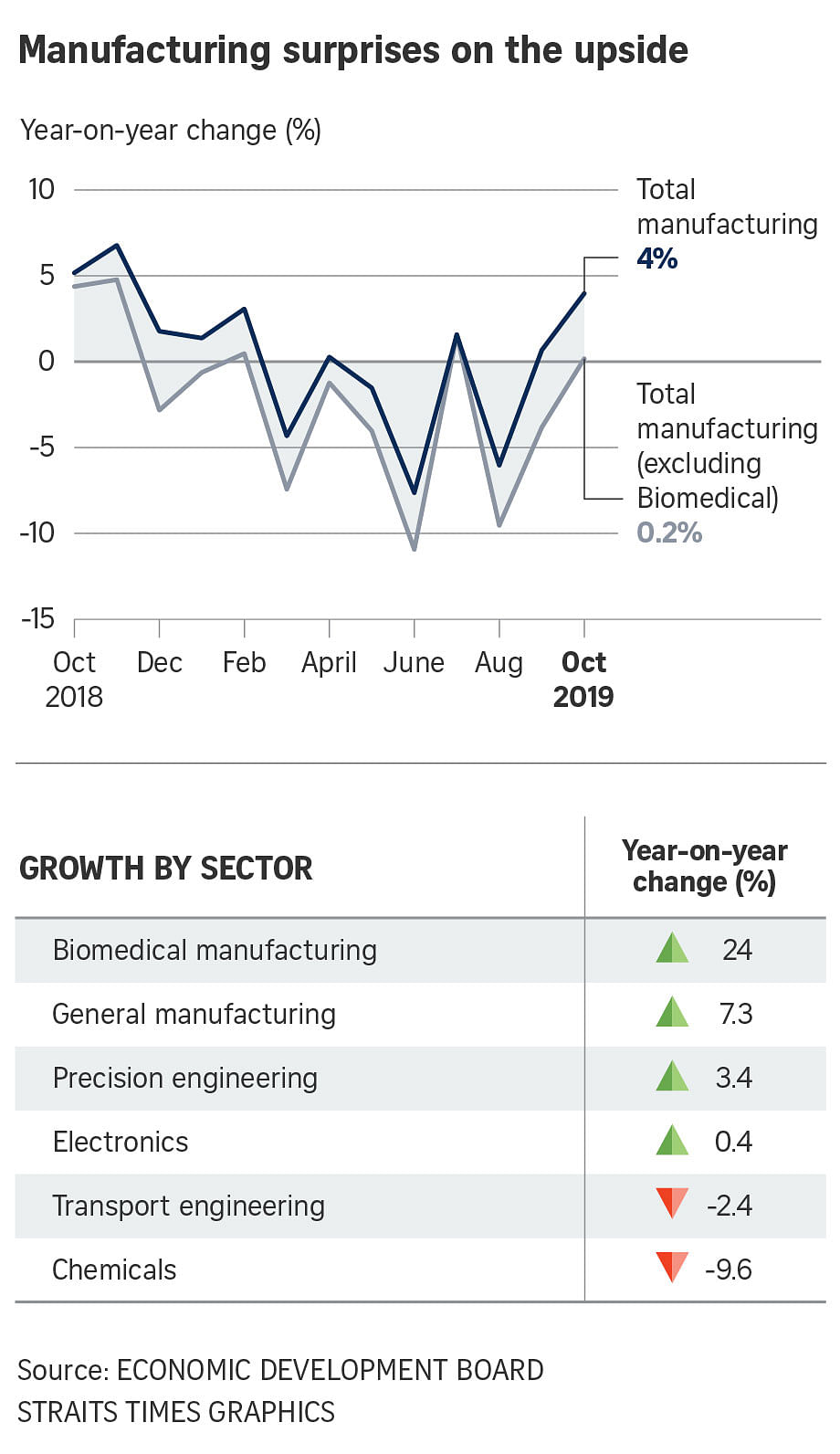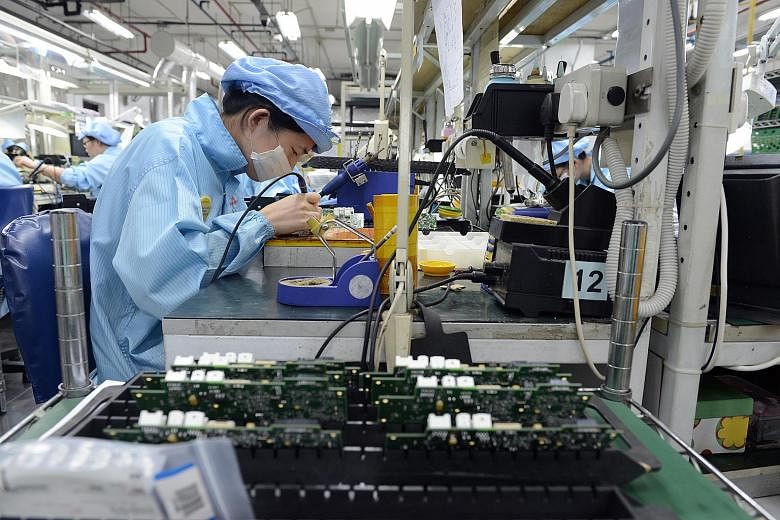SINGAPORE - Singapore's manufacturing output defied predictions in October, thanks to the slumping electronics sector eking out growth and another big jump in pharmaceutical production.
Factory output increased 4 per cent in October year on year, according to figures released by the Economic Development Board (EDB) on Tuesday (Nov 26).
Even without biomedical manufacturing, output grew 0.2 per cent.
September's slight 0.1 per cent growth was also revised upwards to 0.7 per cent.
October's performance was far better than economists expected, with a Bloomberg poll tipping a fall in output of 1.4 per cent year on year.
Growth came on the back of an expansion in biomedical manufacturing, which saw output surge by 24 per cent, following a 23.4 per cent increase in September . The pharmaceutical segment surged 29.6 per cent with higher production of active pharmaceutical ingredients, while the medical technology segment rose 13.1 per cent on the back of higher export demand for medical devices, EDB noted.
CIMB Private Banking economist Song Seng Wun said: "We are used to seeing the last two to three months of the year having far more volatility in the pharmaceutical sector, perhaps because of plant maintenance and batch production. What we may be seeing now is more continuous production, which allows it to have more stable output and far less swing."
Electronics manufacturers saw growth for the first time after seven straight months, with output increasing 0.4 per cent year on year. The infocomms and consumer electronics grew the most at 23.8 per cent, followed by data storage (4.2 per cent) and computer peripherals segments (3.6 per cent).
Semiconductor output declined 0.9 per cent, but this was much better than the double-digit percentage drops in previous months.
For the first 10 months of this year though, the electronics cluster's output declined 6.5 per cent, compared with the same period last year.
JPMorgan analyst Ong Sin Beng said October's lift was supported by technology output, but cautioned that this signal from electronics, especially semiconductors, seemed to be dominated by idiosyncratic rather than global factors.
"The profile of electronics output in Singapore has tended to exhibit a saw-tooth-like profile, especially since mid-2018, effectively reverting to a trend that appears to be headed lower, and it appears that both October and September were strong months following the contraction in August," he said.
Mr Song added that the electronics downturn may have bottomed out. "Chip-makers have said that demand has stabilised in some areas and we see improvement in chip equipment sales. The new gadgets driven by 5G technology in various countries may have also helped."
General manufacturing also saw output increase by 7.3 per cent year on year. The food, beverages and tobacco segment grew 14.2 per cent on account of higher output of milk powder and beverage products. The miscellaneous industries segment rose 3.8 per cent with higher production of wearing apparel and construction related products. But printing output fell 11.8 per cent.
The precision engineering cluster grew 3.4 per cent, with the precision modules and components segment expanding 9.9 per cent with higher production of metal precision components and optical products. But the machinery and systems segment fell 1.7 per cent, largely owing to lower production of refrigeration systems.

Overall, the precision engineering cluster fell 4.5 per cent in the first ten months of this year, compared with the same period last year.
But some clusters recorded declines, with the transport engineering cluster seeing output fall by 2.4 per cent. The aerospace segment grew 21 per cent with more repair and maintenance jobs from commercial airlines, but the land and marine and offshore engineering segments declined.
Chemicals output also dropped 9.6 per cent. The petroleum segment grew 3 per cent but this was offset by lower production in the rest of the chemicals segments. In particular, the specialities and petrochemicals segments contracted by more than 12 per cent, as output in both segments was weighed down by maintenance shutdowns.
OCBC Bank head of treasury research and strategy Selena Ling said: "The positive growth is encouraging but much still depends on 2020 global growth prospects and the US-China trade and tech war progress."
Mr Song added: "President Trump still has the Dec 15 deadline to impose tariffs, which will impact sentiment and consumer businesses as well. It might see a pull back in orders and we may see this low shoot of recovery being snuffed out if that goes through.
"We are moving into months where we do see the low base helping out. There is room for optimism especially from January 2020 onwards where the low base will be even more significant, but all these things can only materialise if confidence remains and the trade fight does not escalate."


